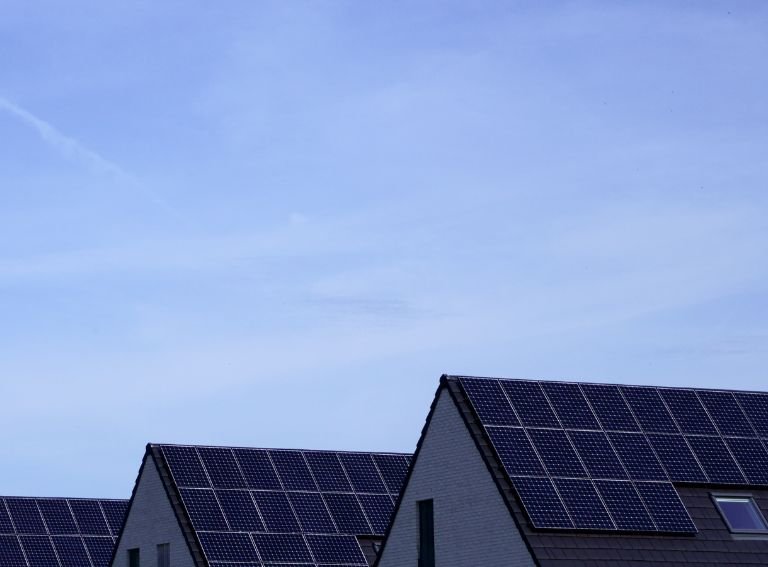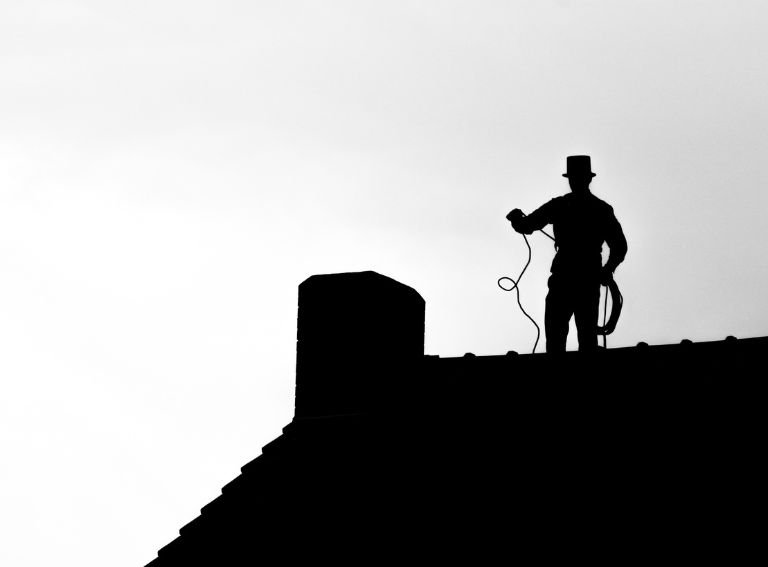Every year, hurricane season brings heavy rain and high winds to Connecticut, and your roof takes the first hit. A few loose shingles or a small leak might not seem like much now, but minor problems quickly become soaked ceilings, ruined insulation, and expensive repairs during a storm.
Think of your roof like a shield. When it’s strong, it keeps your home dry and safe. When it’s weak, water and wind find every little gap. And here’s the thing: a lot of the damage can be prevented with simple checks and upgrades before the storms roll in.
So read on—you’ll learn how to spot the warning signs, how storms damage roofs, and the smart steps you can take right now to protect your home and wallet.
Understanding Hurricane Risks in Connecticut
Hurricanes don’t just hit the coast; they reach deep into Connecticut, bringing pounding rain, fierce winds, and flying debris. Many homeowners think the worst storms only threaten southern states, but history shows Connecticut isn’t safe when big storms roll in.
Heavy rains can dump inches of water in just a few hours. If your roof isn’t ready, leaks can form quickly, soaking insulation, walls, and ceilings before you notice. Meanwhile, strong winds rip at shingles, lift roof edges, and turn tree branches into missiles.
Let me explain, Connecticut homes face special risks because of their age and climate. Many roofs were built decades ago with materials that struggle against today’s stronger storms. Plus, temperature swings between hot summers and freezing winters quietly weaken roof structures over time.
And here’s the part most people miss: coastal towns like New Haven and Stamford aren’t the only ones at risk. Even inland areas like Hartford and Middletown often see hurricane-force winds and flooding during intense storms.
So, understanding how rain and wind attack your roof is the first step to ensuring you’re not caught off guard this hurricane season.

How Heavy Rain and Wind Damage Your Roof
Rain and wind don’t just test your roof; they expose every weak spot you didn’t know you had.
Heavy rain sneaks into tiny cracks, loose shingles, or worn-out flashing. Over time, that water soaks the insulation, rots the wood, and stains your ceilings and walls. If your gutters are clogged or damaged, the problem gets worse fast. Instead of draining away, water pools around the edges and finds new ways inside.
Now here comes the good part, knowing how wind plays into it. Wind does more than make noise. It lifts shingles at the edges, pries at seams, and pulls apart anything not nailed down tight. Once wind finds a way in, it peels back sections of your roof like flipping the page of a book. Flying debris can also punch holes or crack gutters, making it even easier for rain to seep inside.
Let me explain: Rain and wind work together to turn small problems into major roof damage. Rain looks for openings, while wind creates them.
Signs Your Roof May Not Be Ready
You don’t need a ladder to spot early warning signs. Here are seven simple clues your roof might not survive the next big storm.
1. Missing or Broken Shingles
If you see gaps, cracks, or curled edges, rain and wind can quickly rip those spots open.
2. Loose or Rusted Flashing
Flashing seals the joints around chimneys, vents, and skylights. Water will find a way in if it’s rusted, bent, or missing.
3. Sagging Roof Sections
Your roofline should be straight. If parts are dipping or uneven, rot or structural weakness could be underneath.
4. Shingle Granules in Gutters
Granules protect shingles from UV damage and water. Your roof is aging fast if you find lots of gritty debris in your gutters.
5. Exposed Nails or Lifting Materials
Nails sticking up or shingles lifting at the edges are signs that strong winds could peel back parts of your roof.
6. Water Stains or Mold Inside
Check your ceilings and attic. Stains, peeling paint, or musty smells mean water is already leaking in somewhere.
7. Gutters Pulling Away
If your gutters are sagging or separating from the roofline, they won’t carry stormwater away, and that overflow can damage your roof and walls.
Quick Tip:
Spotting any of these signs early allows you to fix problems before heavy rain and wind turn them into expensive repairs.

How to Hurricane-Proof Your Roof
The good news? You don’t need a full rebuild to get your roof storm-ready. A few smart moves now can save you thousands later.
Step 1: Schedule a Professional Roof Inspection
A professional can spot hidden problems you might miss. They’ll check for weak spots, loose materials, and any areas where water could sneak in. Get a written report—it’s handy for insurance and repairs.
Step 2: Repair or Replace Weak Areas
Don’t wait. Replace broken shingles, reseal flashing, and patch leaks now. Small fixes cost a little today but can prevent massive damage later.
Step 3: Reinforce the Roof Structure
Strong connections matter during a storm. Ask your contractor about adding hurricane straps, clips, or stronger nails that anchor the roof tighter to your home.
Step 4: Clean and Strengthen Gutters
Gutters are your roof’s best friend in heavy rain. Clean them out, fix any sagging sections, and consider adding gutter guards to keep leaves and debris from blocking water flow.
Step 5: Trim Overhanging Branches
Don’t give storms extra weapons. Cut back tree branches hanging near your roof. Even a small branch can tear through shingles or crack gutters when thrown by hurricane winds.
Pro Tip:
Even a few simple upgrades can boost your roof’s ability to handle rain and wind, and that extra protection often lowers your insurance risk, too.
Roof Types: Which Hold Up Best in Hurricanes
Not all roofs fight storms the same way. Some materials can take a beating, while others break apart once the winds pick up.
Asphalt Shingles
Asphalt shingles are standard across Connecticut because they’re affordable and easy to install. But regular shingles can tear away fast during high winds.
The better choice? Look for shingles rated for 130+ mph winds. They cost a little more but hold much tighter when storms hit.
Metal Roofs
Metal roofs are like armor. They’re lightweight and strong and can handle heavy rain and winds up to 140 mph or more. Plus, they shed water quickly, which helps avoid leaks.
There’s a small catch: They cost more upfront, but they last decades longer than regular shingles, and insurance companies often give discounts for having one.
Tile and Slate Roofs
Tile and slate roofs are heavy, which helps them stay in place during hurricanes. But if not properly secured, they can break under pressure or turn into dangerous flying debris.
Tip: If you have tile or slate, ensure the pieces are tightly fastened with hurricane-rated clips and anchors.
Quick Tip:
If your roof is older or made with basic materials, upgrading just part of it—like the shingles or the fastening system- can make a huge difference without needing a full replacement.
Should You Consider a Full Roof Replacement?
Sometimes repairs just aren’t enough. If your roof is old, worn out, or poorly patched, it might be smarter, and cheaper long-term to replace it before hurricane season starts.
When Repairs Aren’t Enough
If your roof is over 20 years old, has widespread damage, or has been repaired multiple times, it may not withstand strong storms.
Think about it this way: A few hundred dollars in repairs might buy you time, but a full replacement buys you real protection for the next 20–30 years.
Benefits of Replacing Before Hurricane Season
- Stronger Materials: Newer roofs are built to higher wind and water standards.
- Better Insurance Coverage: Some insurers offer lower rates if you have a storm-resistant roof.
- Higher Home Value: A new roof isn’t just protection—it’s a big selling point if you ever move.
- Peace of Mind: When the next hurricane warning flashes across your phone, you’ll worry less.
Let me explain—waiting until after a storm to fix major problems almost always costs more, and insurance claims can get tricky if your roof was already in poor shape.
Pro Tip:
If you’re already seeing warning signs or your roof is nearing the end of its life, getting ahead now could save you a considerable headache later.

Insurance and Hurricane Roof Damage
Having insurance is smart, but knowing what’s covered is even smarter. Many homeowners only find out after a storm that their policy has limits they didn’t expect.
Does Your Homeowners’ Insurance Cover Hurricane Damage?
Most standard policies cover wind and rain damage, but they often have separate deductibles for hurricanes or windstorms. Some policies even reduce coverage if your roof was old or poorly maintained when the storm hit.
Quick Tip:
Read your policy carefully. Look for terms like “windstorm deductible” or “roof exclusions.” Call your agent to ask direct questions before the storms roll in if anything is unclear.
Tips for Documenting Roof Condition for Claims
Let me explain—insurance companies love proof. The more you have, the easier your claim will go.
- Take photos of your entire roof, including close-ups of shingles, flashing, gutters, and attic ceilings.
- Save receipts for any repairs, maintenance, or upgrades.
- Get a professional inspection report if you’re repairing or replacing the roof—it shows you were proactive, not negligent.
Why it matters:
Without solid documentation, you could fight for months to get a claim approved—or worse, foot the bill yourself.
Pro Tip:
A little preparation can turn a stressful insurance claim into a quick, smooth payout after a storm.
Conclusion
Hurricane season isn’t a surprise, it shows up every year. The real surprise is how much damage one storm can cause if your roof isn’t ready.
The good news? A few smart steps today like fixing weak spots, reinforcing key areas, and keeping your gutters clear can save you from major repairs, insurance headaches, and expensive water damage later.
Remember, if your roof is older or already showing signs of trouble, it might be time to think bigger. Replacing now means stronger protection, better insurance rates, and real peace of mind when the next big storm hits.
So read on, take action, and make sure your roof is ready to stand strong this hurricane season. Your home and your wallet will thank you.




